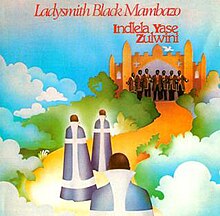
Jesu are a British experimental metal band formed in 2003 by Justin Broadrick following the breakup of his band Godflesh. It shares its name with the last song on Hymns, the final album of Godflesh's initial run. Jesu's sound is heavily layered and textured, incorporating a diverse mix of influences. Broadrick himself has stated that "...it's very loosely speaking pop/rock/metal/electronica ... I'm intentionally writing what I consider to be coherent 'pop' songs".
"Jesu, Joy of Man's Desiring" is the most common English title of a piece of music derived from a chorale setting from the cantata Herz und Mund und Tat und Leben, BWV 147, composed by Johann Sebastian Bach in 1723. The same music on different stanzas of a chorale closes both parts of the cantata.
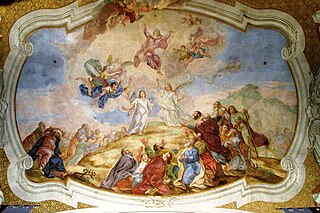
Lobet Gott in seinen Reichen, BWV 11, known as the Ascension Oratorio, is an oratorio by Johann Sebastian Bach, marked by him as Oratorium In Festo Ascensionis Xsti, probably composed in 1735 for the service for Ascension and first performed on 19 May 1735.
Inkazimulo is an album by the South African isicathamiya group Ladysmith Black Mambazo. The members who sang in the Inkazimulo album were Joseph Shabalala Inos Phungula Albert Mazibuko Headman Shabalala Jabulani Dubazana Russell Mthembu Geophrey Mdletshe Abednego Mazibuko Jockey Shabalala Ben Shabalala. It was released in 1985 and was a primarily religious release. The album was recorded a year before the group's collaboration with Paul Simon on his Graceland album and tour.

Komm, Jesu, komm, BWV 229, is a motet by Johann Sebastian Bach, with a text by Paul Thymich. It was composed in Leipzig, and received its first performance by 1731–1732.
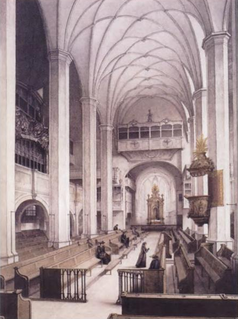
Liebster Jesu, mein Verlangen, BWV 32, is a church cantata by Johann Sebastian Bach. He composed the dialogue cantata in Leipzig for the first Sunday after Epiphany and first performed it on 13 January 1726 as part of his third cantata cycle.

The Quest of the Historical Jesus is a 1906 work of Biblical historical criticism written by Albert Schweitzer during the previous year, before he began to study for a medical degree.
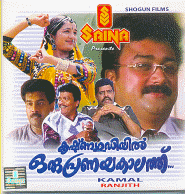
Krishnagudiyil Oru Pranayakalathu is a 1997 Indian Malayalam-language romance film written and directed by Kamal, starring Jayaram, Manju Warrier, Balachandra Menon, Biju Menon and Vinaya Prasad. The music was composed by Vidyasagar.
Woza Albert! is a satirical South African political play written by Percy Mtwa, Mbongeni Ngema, and Barney Simon in 1981. The play is a two-man show that contains 26 vignettes. The play imagines the second coming of Jesus Christ during the apartheid-era as experienced by a variety of black South Africans. Written as a piece of protest theater, Woza Albert! sought to confront the inequalities and oppression of apartheid South Africa. Woza Albert! was turned into a film and is a prime example of Workshop Theatre movement in South Africa and became one of the most produced South African plays within South Africa and internationally. The play is highly praised for its use of humor and ability to illuminate and critique the systematic oppression of black South Africans under the apartheid regime.

Johann Sebastian Bach composed the church cantata Du Friedefürst, Herr Jesu Christ, BWV 116, in Leipzig for the 25th Sunday after Trinity. He led the first performance on 26 November 1724, concluding the liturgical year of 1724.

Mein liebster Jesus ist verloren, BWV 154, is a church cantata by Johann Sebastian Bach. He composed it for the first Sunday after Epiphany and first performed it in Leipzig on 9 January 1724.
Jesuism is the teachings of Jesus in distinction to the teachings of mainstream Christianity. In particular, the term is often contrasted with Pauline Christianity and mainstream church dogma of Nicene Christianity.

Sehet, wir gehn hinauf gen Jerusalem, BWV 159, is a church cantata by Johann Sebastian Bach. He composed it in Leipzig for the Sunday Estomihi, the last Sunday before Lent, and probably first performed it on 27 February 1729. The gospel reading for the Sunday, from the Gospel of Luke, includes Jesus announcing his suffering and death in Jerusalem. The cantata's theme and Bach's music foreshadow his Passion.

Wo gehest du hin?, BWV 166, is a church cantata by Johann Sebastian Bach. He composed it in Leipzig for Cantate, the fourth Sunday after Easter, and first performed it on 7 May 1724.
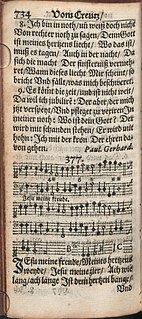
"Jesu, meine Freude" is a hymn in German, written by Johann Franck in 1650, with a melody, Zahn No. 8032, by Johann Crüger. The song first appeared in Crüger's hymnal Praxis pietatis melica in 1653. The text addresses Jesus as joy and support, versus enemies and the vanity of existence. The poetry is bar form, with irregular lines from 5 to 8 syllables. The melody repeats the first line as the last, framing each of the six stanzas.
"Jesu Leiden, Pein und Tod" is a German Lutheran hymn by Paul Stockmann. Written in 34 stanzas and published in 1633, it narrates the Passion of Jesus. It was sung to a melody by Melchior Vulpius. Johann Sebastian Bach used three of its stanzas as chorales in his St John Passion.

"O Jesu Christe, wahres Licht" is a Lutheran hymn by the German Baroque poet, Lutheran minister and hymn-writer Johann Heermann. The text was first published in 1630 during the Thirty Years' War. It is a prayer for enlightenment of those who are ignorant, and of those who turned away. It was associated with a melody from Nürnberg, dating to 1676. The hymn is part of modern German hymnals, both Protestant and Catholic. It was translated to English as "O Christ, our true and only light".
Christoph Graupner composed the Passion cantata Das Leiden Jesu von seinen Freunden, GWV 1122/41, in Darmstadt in 1741, for Oculi Sunday. It is based on a libretto by Johann Conrad Lichtenberg who wrote a cycle of reflective cantatas for the seven Sundays in Lent of that year, with this cantata focused on Jesus being betrayed and denied by his friends. The cantata is structured in seven movements, a Biblical dictum, a sequence of alternating recitatives and arias, and a closing chorale fantasia. It is scored for four voices, strings and continuo.
